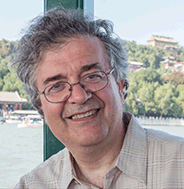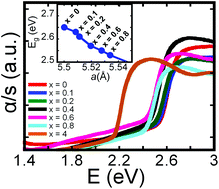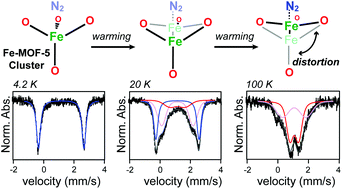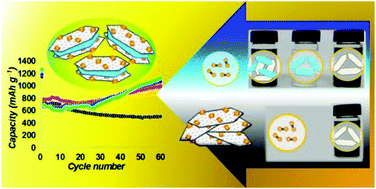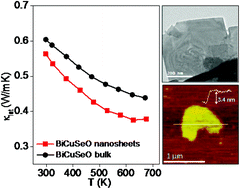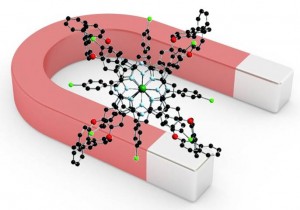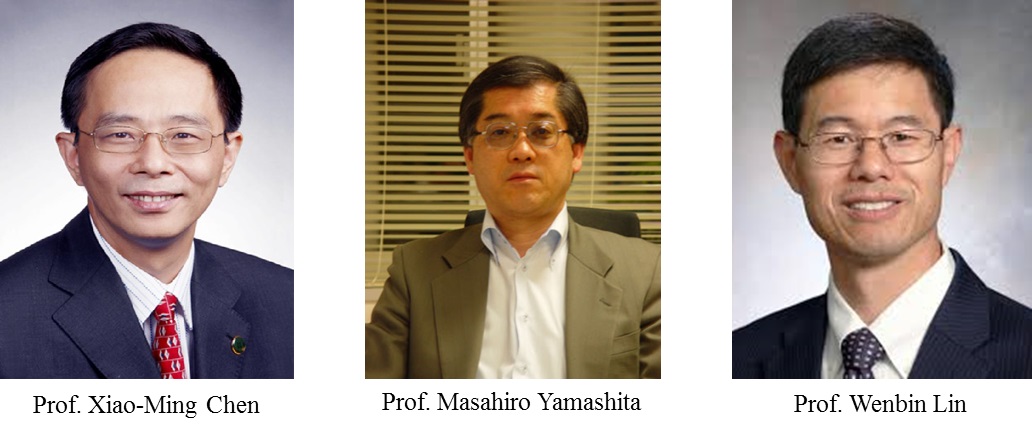 Inorganic Chemistry Frontiers strives to promote multi-disciplinary inorganic chemistry research at the interfaces of other areas, including energy science.
Inorganic Chemistry Frontiers strives to promote multi-disciplinary inorganic chemistry research at the interfaces of other areas, including energy science.
We are delighted to share with you a collection of articles from Inorganic Chemistry Frontiers to showcase the role of inorganic chemistry in energy storage and conversion.
You can read these articles for free till the end of July.
Review Articles
Glimpses of the modification of perovskite with graphene-analogous materials in photocatalytic applications
Saumyaprava Acharya, Satyabadi Martha, Prakash Chandra Sahoo and Kulamani Parida
Crystal facet tailoring arts in perovskite oxides
Keke Huang, Long Yuan and Shouhua Feng
Heteroatom-doped carbons: synthesis, chemistry and application in lithium/sulphur batteries
Sheng S. Zhang
Nanocrystalline iron oxide based electroactive materials in lithium ion batteries: the critical role of crystallite size, morphology, and electrode heterostructure on battery relevant electrochemistry
Andrea M. Bruck, Christina A. Cama, Cara N. Gannett, Amy C. Marschilok, Esther S. Takeuchi and Kenneth J. Takeuchi
High performance electrochemical capacitor materials focusing on nickel based materials
Bing Li, Mingbo Zheng, Huaiguo Xue and Huan Pang
Highlights
CO2 and ambient air in metal–oxygen batteries: steps towards reality
Shaomao Xu, Sampson Lau and Lynden A. Archer
A new sodium storage mechanism of TiO2 for sodium ion batteries
Dong Yan and Likun Pan
Research articles
Sandwich-like carbon-anchored ultrathin TiO2 nanosheets realizing ultrafast lithium storage
Yongfu Sun, Jinbao Zhu, Liangfei Bai, Qiuyang Li, Xing Zhang, Wei Tong and Yi Xie
2,2′-Bis(3-hydroxy-1,4-naphthoquinone)/CMK-3 nanocomposite as cathode material for lithium-ion batteries
Hao Li, Wenchao Duan, Qing Zhao, Fangyi Cheng, Jing Liang and Jun Chen
Carbon aerogels electrode with reduced graphene oxide additive for capacitive deionization with enhanced performance
Yong Liu, Chunyang Nie, Likun Pan, Xingtao Xu, Zhuo Sun and Daniel H. C. Chua
Hetero-nuclear coordinated compounds for use in high-performance supercapacitor electrode material design
Liwei Mi, Yang Gao, Shizhong Cui, Hongwei Hou and Weihua Chen
Hierarchical nanoarray materials for advanced nickel–zinc batteries
Zhiyi Lu, Xiaochao Wu, Xiaodong Lei, Yaping Li and Xiaoming Sun
Nickel hydroxide–nickel nanohybrids indirectly from coordination microfibers for high-performance supercapacitor electrodes
Junhong Zhao, Junzhi He, Mengjun Sun, Meijiao Qu and Huan Pang
Porous ZnCo2O4 nanoparticles derived from a new mixed-metal organic framework for supercapacitors
Siru Chen, Ming Xue, Yanqiang Li, Ying Pan, Liangkui Zhu, Daliang Zhang, Qianrong Fang and Shilun Qiu
Nanosheet-assembled MoSe2 and S-doped MoSe2−x nanostructures for superior lithium storage properties and hydrogen evolution reactions
Yong Yang, Shitong Wang, Jingchao Zhang, Haoyi Li, Zilong Tang and Xun Wang
A soil/Vulcan XC-72 hybrid as a highly-effective catalytic cathode for rechargeable Li–O2 batteries
Xiaofei Hu, Xiaorui Fu and Jun Chen
Multichromophoric di-anchoring sensitizers incorporating a ruthenium complex and an organic triphenyl amine dye for efficient dye-sensitized solar cells
Pei-Yang Su, Jun-Min Liu, Xue-Lian Lin, Yi-Fan Chen, Yong- Shen, Li-Min Xiao, Dai-Bin Kuang and Cheng-Yong Su
Cation reduction and comproportionation as novel strategies to produce high voltage, halide free, carborane based electrolytes for rechargeable Mg batteries
Scott. G. McArthur, Linxiao Geng, Juchen Guo and Vincent Lavallo
A surfactant-thermal method to prepare crystalline thioantimonate for high-performance lithium-ion batteries
Lina Nie, Yu Zhang, Wei-Wei Xiong, Teik-Thye Lim, Rong Xu, Qingyu Yan and Qichun Zhang
Multi-shelled LiMn2O4 hollow microspheres as superior cathode materials for lithium-ion batteries
Feng Wang, Jiangyan Wang, Hao Ren, Hongjie Tang, Ranbo Yu and Dan Wang
Electrochemical fabrication of one-dimensional porphyrinic wires on electrodes
Suzaliza Mustafar, Kuo-Hui Wu, Ryojun Toyoda, Kenji Takada, Hiroaki Maeda, Mariko Miyachi, Ryota Sakamoto and Hiroshi Nishihara
MoS2 with an intercalation reaction as a long-life anode material for lithium ion batteries
Zhe Hu, Qiannan Liu, Weiyi Sun, Weijie Li, Zhanliang Tao, Shu-Lei Chou, Jun Chen and Shi-Xue Dou
Molecular photo-charge-separators enabling single-pigment-driven multi-electron transfer and storage leading to H2 evolution from water
Kyoji Kitamoto, Makoto Ogawa, Gopalakrishnan Ajayakumar, Shigeyuki Masaoka, Heinz-Bernhard Kraatz and Ken Sakai
Cut-and-stack nanofiber paper toward fast transient energy storage
Zhen Liu, Kun Fu, Zhengyang Wang, Yujie Zhu, Jiayu Wan, Yonggang Yao, Jiaiqi Dai, Myeongseob Kim, Laura Swafford, Chunsheng Wang and Liangbing Hu
Water-soluble, heterometallic chalcogenide oligomers as building blocks for functional films
J. Y. Chane-Ching, L. Perrin, P. Puech, V. Bourdon, V. Foncrose, A. Balocchi, X. Marie and P. Lavedan
A Co3O4@MnO2/Ni nanocomposite as a carbon- and binder-free cathode for rechargeable Li–O2 batteries
Xiaopeng Han, Fangyi Cheng, Chengcheng Chen, Fujun Li and Jun Chen
Shrimp-shell derived carbon nanodots as precursors to fabricate Fe,N-doped porous graphitic carbon electrocatalysts for efficient oxygen reduction in zinc–air batteries
Xian Zhang, Rongrong Liu, Yipeng Zang, Guoqiang Liu, Shengwen Liu, Guozhong Wang, Yunxia Zhang, Haimin Zhang and Huijun Zhao
Facile synthesis of amorphous aluminum vanadate hierarchical microspheres for supercapacitors
Yan Yan, Hao Xu, Wei Guo, Qingli Huang, Mingbo Zheng, Huan Pang and Huaiguo Xue
Chemical modification of gold electrodes via non-covalent interactions
Brian R. Lydon, Alex Germann and Jenny Y. Yang
Save


